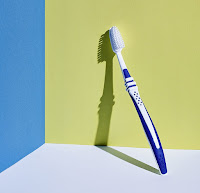The Aesthetic Revolution: Advantages of Tooth Color Fillings Over Traditional Amalgam Fillings
In the world of modern dentistry, the emphasis on aesthetics and patient satisfaction has driven significant advancements in dental materials and techniques. One such revolutionary change has been the widespread adoption of tooth color fillings over traditional amalgam fillings. Tooth color fillings, also known as dental composite fillings, have transformed the way dentists restore decayed or damaged teeth, offering numerous advantages over their amalgam counterparts. In this article, we will explore the aesthetic revolution of tooth color fillings and delve into the many reasons why they have become the preferred choice for both dental practitioners and patients.
- 1. Seamless Integration with Natural Teeth
One of the most compelling advantages of tooth color fillings is their ability to blend seamlessly with the natural color of the patient's teeth. Unlike amalgam fillings, which are noticeable due to their silver-gray color, tooth color fillings are available in various shades that match the natural color of individual teeth. This exceptional color-matching capability allows dentists to restore teeth in a way that is virtually indistinguishable from the surrounding dentition, resulting in a more aesthetically pleasing and natural-looking smile.
- 2. Enhanced Aesthetics and Improved Confidence
The aesthetic appeal of tooth color fillings goes beyond their ability to match the color of natural teeth. With tooth color fillings, patients can smile confidently, knowing that their dental restorations will not draw unwanted attention. This boost in self-confidence can have a positive impact on patients' social and professional lives, as they no longer need to feel self-conscious about their dental work.
- 3. Minimally Invasive Approach
Tooth color fillings require less removal of healthy tooth structure compared to traditional amalgam fillings. The composite material used in tooth color fillings bonds directly to the tooth surface, allowing for a more conservative preparation technique. Preserving more of the natural tooth structure is essential for the long-term health and strength of the tooth. This minimally invasive approach not only preserves tooth structure but also reduces the risk of future complications.
- 4. Mercury-Free and Biocompatible
Amalgam fillings consist of a mixture of metals, including mercury, which has raised concerns over potential health risks, despite the American Dental Association's assurance that amalgam fillings are safe. Tooth color fillings, on the other hand, are mercury-free, making them a preferred choice for patients who are conscious about their health and prefer biocompatible materials. The absence of mercury eliminates any potential concerns related to the exposure to this controversial element.
- 5. Reduced Risk of Tooth Fractures
The bonding mechanism of tooth color fillings helps to reinforce the tooth's structure and prevent fractures. Amalgam fillings, being a non-adhesive material, require more extensive tooth preparation, leading to weakened teeth that are susceptible to fractures over time. Tooth color fillings, with their adhesive properties, provide additional support to the tooth, reducing the risk of fractures and contributing to the overall longevity of the restoration.
- 6. Temperature Sensitivity
Amalgam fillings have been associated with temperature sensitivity, causing discomfort for some patients when consuming hot or cold foods and beverages. Tooth color fillings, however, do not exhibit temperature sensitivity due to their ability to bond directly with the tooth structure, creating a more stable and comfortable restoration for patients.
- 7. Versatility of Applications
Tooth color fillings are not only suitable for treating cavities but are also versatile in various cosmetic applications. Dentists use dental composite to repair chipped or worn teeth, close small gaps, and alter the shape of teeth to enhance overall aesthetics. This versatility allows dental practitioners to offer comprehensive dental treatments with a focus on aesthetics and functionality.
- 8. Long-Term Aesthetics and Durability
Tooth color fillings have evolved significantly in terms of durability and longevity. With advancements in dental composite materials, modern tooth color fillings can withstand the daily stresses of chewing and biting for many years. Patients can enjoy beautiful smiles and functional teeth without worrying about frequent replacements or repairs.
- 9. Conservative Repairs for Failed Restorations
If a tooth color filling needs repair or replacement in the future, the process is less invasive than fixing amalgam fillings. With amalgam fillings, additional tooth structure often needs to be removed to ensure proper retention. In contrast, repairing tooth color fillings typically involves minimal removal of the existing composite and a straightforward process to create a new, seamless restoration.
The aesthetic revolution of tooth color fillings has transformed the field of restorative dentistry, offering patients an alternative that not only restores dental health but also enhances the overall appearance of their smiles. From seamless integration with natural teeth to reduced risks of tooth fractures, tooth color fillings provide numerous advantages over traditional amalgam fillings. With their biocompatibility, durability, and versatility, tooth color fillings have become a preferred choice for both dental practitioners and patients seeking aesthetically pleasing and long-lasting dental restorations. As dental technology continues to advance, the future of tooth color fillings holds even more promise for the dental industry, shaping brighter and more confident smiles for patients worldwide. Get the best Tooth-colored fillings in Caste Hills of Lewisville.

.jpg)
.jpg)

Comments
Post a Comment